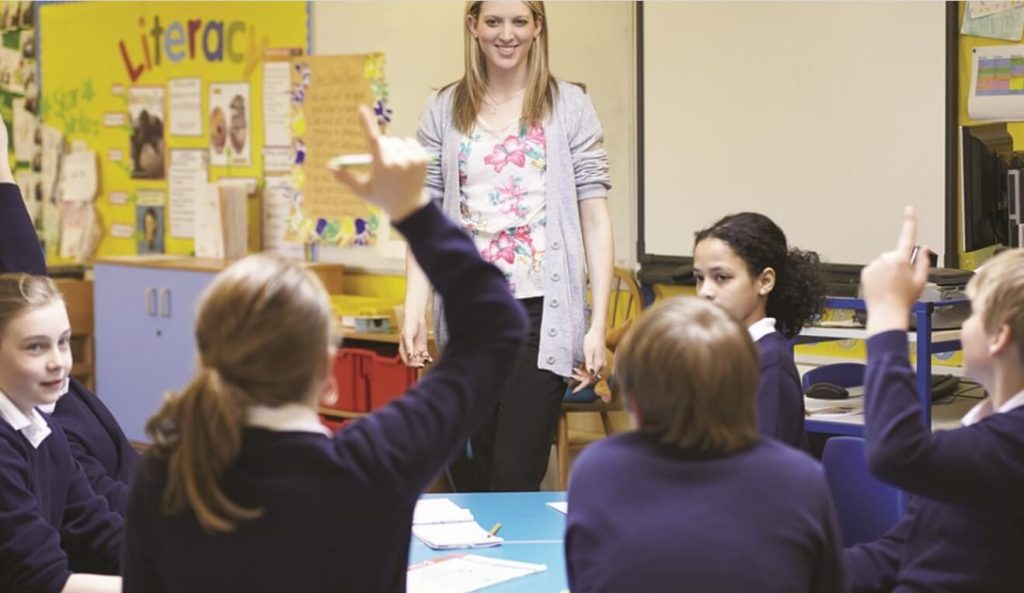The most effective teachers understand the importance of implementing various strategies in the classroom, ensuring students stay engaged and motivated to participate. However, it can also be easy for teachers to fall into a rut, going back to the same lessons over and over.
Perhaps it is the most comfortable approach they return to or just the one that is the easiest, but that does not necessarily mean the method will be the most effective at ensuring student learning.
Teachers must pay close attention to their instructional methods and employ a variety of tools and tricks to be effective with students. If your classroom routine desperately needs a makeover, read on to learn how you can try out 8 different methods of effective teaching for every classroom.
Mixing Methods: The Recipe for Success
Not every classroom is alike, nor is every student the same regarding what methods work best. Some years you may find your classroom dominated by big personalities and hyperactive students, while the next year, your group might have more introverted bookworms.
Class size can also factor into what methods work best: working with a group of 12 students is not the same as working with 30. It is important to adopt and adapt the methods offered here (as well as others) to make them work for you and your students. Try changing up which methods you implement on a weekly or even daily basis for the best results.
8 Methods for Effective Teaching
These are by no means the only strategies you can try out in your classroom. However, the 8 methods described here have been known to generate positive results for various educators in a multitude of classroom settings.
1. Create Opportunities for Choice
Opportunities for choice in the classroom is a strategy proven to increase student engagement. When students can choose their own assignments from various options, they will immediately be more invested in the work and the outcome.
Choice empowers students and allows them to align their interests and talents with their work and active learning in the classroom. Each week, consider your lesson plans, assignments, and instructional strategies and find at least one area where you might be able to provide a student choice opportunity—even if only two options exist.
2. Use Group Work to Broaden Perspectives
Group work is one of the most important methods to implement for many reasons. Not only does it increase student engagement, but it also opens up students to differing perspectives and helps them form and manage relationships with their peers.
Putting students in small groups for various projects and assignments will create opportunities to learn from their peers and perhaps make connections they would not have otherwise made. The skills built in early education group work translate to lifelong skills used in the workplace and beyond.
3. Set up Learning Stations in Your Classroom
Movement is incredibly important, especially with younger students, and if you can create opportunities to move throughout the classroom while working on an assignment, you may be able to harness the energy of especially active students.
The natural breaks as groups move from station to station also provide a chance to pause and “reset;” these kinds of intentional pauses are incredibly important for students and teachers during instructional time. Movement through learning stations provides a different way for students to absorb content, rather than just sitting at their desks through long lectures.
4. Incorporate Gaming for Easy Wins

Rather than working against a gaming culture, teachers should embrace it with gamification elements in the classroom that instantly grab students’ attention.
Video games are incredibly popular with students of all ages and backgrounds; they naturally motivate people to keep playing—either by competing against their own best scores or competing against others—and they provide visual rewards at various levels and stages of a game.
Why not mimic this in the classroom setting? Virtually any content or subject matter can be turned into a game with some creative thinking. It can even be as simple as implementing “board races” with mini-white boards. Consider having the students participate in creating the game itself for even more investment and student engagement.
5. Recognize Effort (Not Just Student Achievement)
The most effective teachers understand that recognition tied only to student achievement can actually have a detrimental effect in some classroom settings, and it is equally (if not more) important to recognize effort. This is not to say a traditional “honor roll” or “principal’s list” should be abandoned entirely.
Academic achievements in the form of grades and test scores can still serve as useful feedback during the learning process. However, educators should also find concrete, demonstrable ways to acknowledge effort when and where appropriate.
This could be as simple as telling a student after class, “I saw how hard you worked to try to solve that equation; even though your final answer was incorrect, I appreciate the time you spent on it, and how you didn’t give up. I think I know a few tricks that can help you next time.” Or the recognition for effort might be included in comments on a report card or a note home to parents.

6. Favor Thinking Over Memorizing
Today’s educators recognize the old-fashioned learning methods centered around memorization, ultimately short-change students.
Teachers now favor thinking-based learning as it empowers students to contextualize their learning and become more effective thinkers. Memorization results in students simply storing data in their heads but not using it in a meaningful way; thinking-based learning means students can turn that data into knowledge and apply it to various experiences.
7. Rethink Your Assessments
Traditionally students have been subject to summative assessments, meaning they are tested on their skills at the end of a unit. However, in formative assessments, teachers assess students frequently throughout the learning process and in smaller chunks of information.
This method allows teachers to spot shortcomings sooner in order to more quickly support students where they need more help or redirection. Ultimately this method improves the learning process with better outcomes for students and teachers.
The key to using formative assessments successfully is by making sure they are easy for both the student and teacher to manage and not creating a drain on time and resources. The popular Fist to Five visual check is one great way to do this, or a teacher might create his own short Google form for students to use.
8. Embrace the Power of Technology
Finally, effective teachers know that technology can create major wins in the classroom and for the students’ learning experience when used strategically. Break up the monotony of lectures during instruction with a short YouTube video or even a podcast. This is an easy way to keep students engaged and create variety in how the material is presented in the classroom, leading to more effective instruction time.




